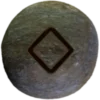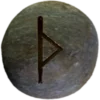Last Updated on December 30, 2024


Gerðr (GAIR-thur), sometimes spelled Gerd or Gerth, is a prominent figure among the jötnar. Her name translates to “enclosure” or “protected space,” symbolizing fertility and abundance. As a jötunn, she plays a significant role in tales of union and harmony between different realms.
The Poetic Edda and Prose Edda recount her story, particularly in the poem Skírnismál. Gerðr’s beauty captivates Freyr, one of the Vanir gods, who falls in love with her from afar. Freyr sends his servant, Skírnir (SKEER-neer), to woo her on his behalf. Initially resistant, Gerðr agrees to marry Freyr after a combination of gifts and threats. Their union symbolizes the merging of opposing forces: the wild, untamed nature of the jötnar and the cultivated order of the Vanir.
Gerðr resides in her hall, Gymir’s Grove, a place described as radiant and filled with light. This imagery reinforces her connection to fertility, growth, and prosperity. Her story highlights themes of love, persistence, and reconciliation, making her a complex and intriguing character. Despite her giantess heritage, Gerðr bridges the gap between gods and jötnar, showing that even those from opposing sides can find common ground. ![]()
Elder Futhark Runes Associated with Gerðr
The Berkanan rune (ᛒ), pronounced “BER-kah-nahn,” connects to Gerðr’s role as a symbol of fertility and new beginnings. This rune represents growth, family, and nurturing energy. ![]()
The Ingwaz rune (ᛜ), pronounced “ING-wahz,” embodies the union of Gerðr and Freyr. It signifies fertility, harmony, and the cyclical nature of life.
Importance to Asatruar
To Asatruar, Gerðr represents the union of opposites and the balance between chaos and order. Her story inspires harmony. Her marriage to Freyr serves as a reminder that perseverance can bridge even the widest divides. Gerðr embodies the vitality of nature, the richness of the earth, and the potential for growth when forces unite.


